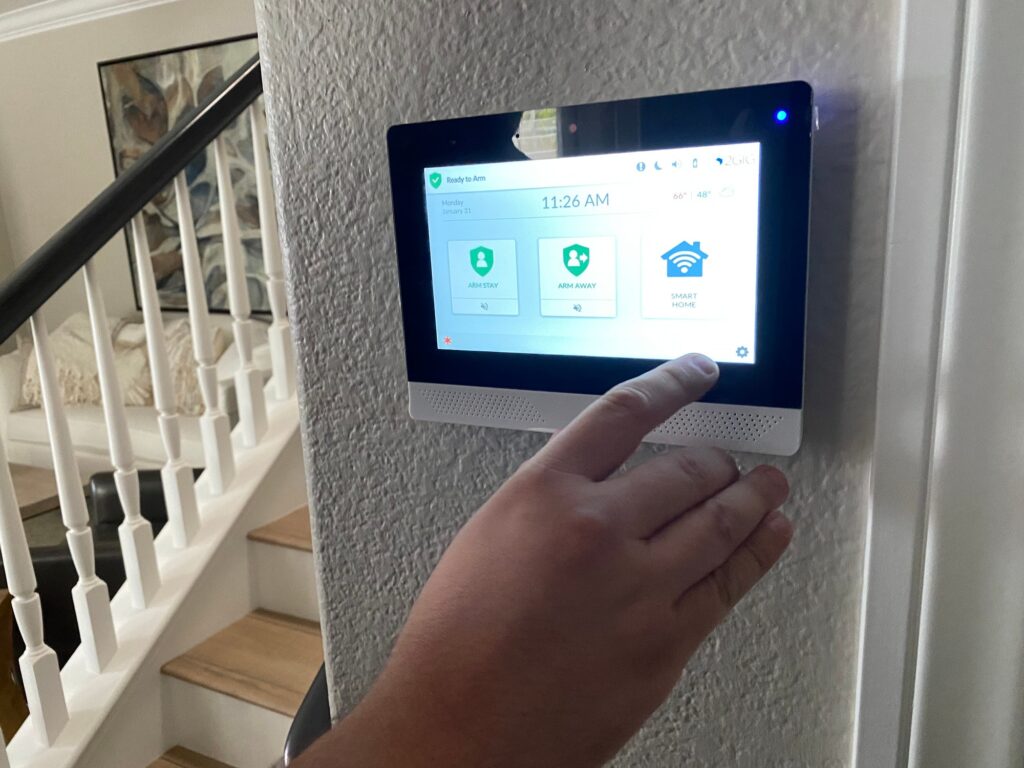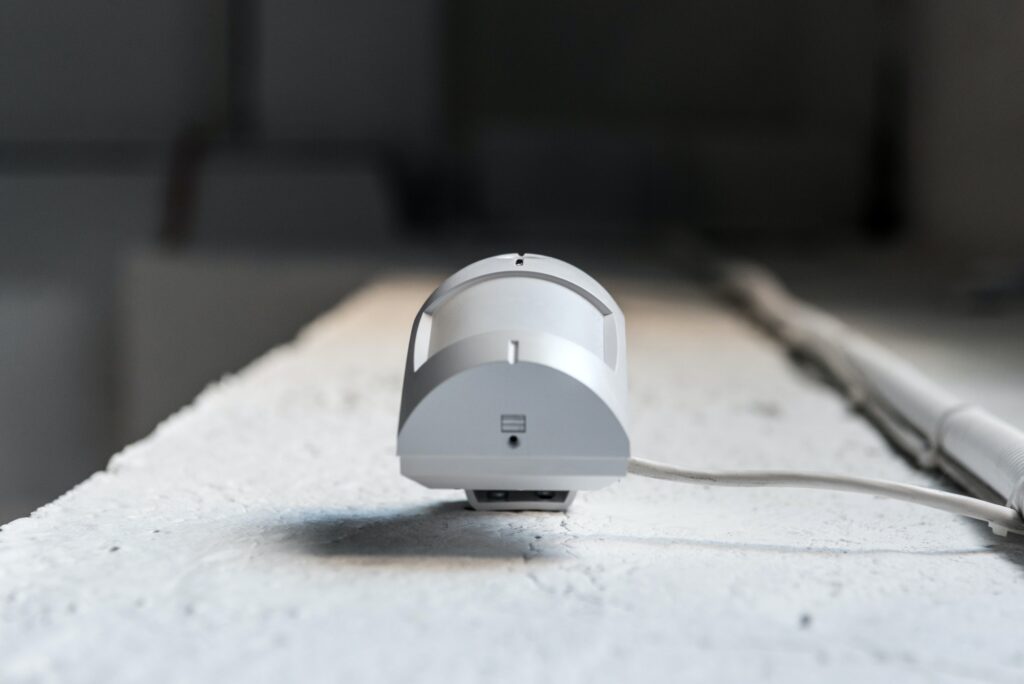In an age where technology intertwines seamlessly with our daily lives, the concept of a secure home has evolved remarkably. Smart home motion sensors stand at the forefront of this evolution, redefining how we safeguard our homes by offering a vigilant eye and prompt alerts in case of potential threats or unauthorized movements. The heartbeat of modern security systems, these sophisticated devices aren’t just about triggering alarms; they represent a fusion of advanced technology and intuitive security measures. This comprehensive guide delves into unlocking the secrets and embracing the possibilities that smart home motion sensor alarms bring to your doorsteps.
Understanding Smart Home Motion Sensor Alarms

What are Smart Home Motion Sensor Alarms?
Smart home motion sensor alarms are advanced security devices designed to detect any motion or movement within a designated area of your home. They act as silent sentinels, monitoring surroundings and alerting homeowners the moment any unusual activity is detected.
How Do Smart Home Motion Sensor Alarms Work?
Understanding the underlying technology behind motion sensor alarms is crucial. Leveraging sophisticated technology, these alarms utilize a combination of sensors, such as passive infrared (PIR), microwave, or dual technology, to detect changes in the environment. Upon detecting motion, these sensors send signals to a central hub or a connected smart home system. The system then triggers an alert, which can be a notification on your smartphone, a siren, or both. Some advanced models can differentiate between human and pet movements to avoid false alarms.
Types of Smart Home Motion Sensor Alarms
Smart home motion sensor alarms come in various types, each utilizing different technologies to detect movement and enhance home security. Here are the primary types of smart home motion sensor alarms:
1. Passive Infrared (PIR) Sensors:
– How They Work: PIR sensors detect changes in infrared radiation within their field of view, typically emitted by warm objects such as humans.
– Advantages: Energy-efficient, suitable for indoor use, and effective for detecting body heat.
2. Microwave Sensors:
– How They Work: Microwave sensors emit microwaves and analyze the reflections. They are sensitive to any movement within their coverage area.
– Advantages: Can detect movement through walls and other obstacles, making them suitable for a variety of environments.
3. Ultrasonic Sensors:
– How They Work: Ultrasonic sensors use sound waves to detect motion. They emit ultrasonic pulses and analyze the reflected waves.
– Advantages: Effective in detecting subtle movements, less prone to false alarms caused by environmental factors.
4. Dual Technology Sensors:
– How They Work: Combine two or more technologies (e.g., PIR and microwave) to enhance accuracy and reduce false alarms.
– Advantages: Improved reliability by cross-verifying signals from different sensors, minimizing false positives.
5. Camera-Based Motion Sensors:
– How They Work: Use cameras and image processing to detect changes in the visual field, such as movement or changes in lighting.
– Advantages: Provide visual verification, allowing users to see what triggered the alarm. Suitable for both indoor and outdoor use.
6. Acoustic Sensors:
– How They Work: Detect changes in sound patterns to identify movement or unusual noises.
– Advantages: Effective in environments where other sensor types may struggle, such as dark or visually obstructed spaces.
7. Area Reflective Sensors:
– How They Work: Emit beams of infrared light and detect changes in reflection patterns caused by moving objects.
– Advantages: Useful for specific applications, such as protecting a defined area or entry point.
8. Vibration Sensors:
– How They Work: Detect vibrations caused by movement or tampering, such as someone attempting to force open a door or window.
– Advantages: Ideal for securing specific points, like windows and doors.
9. Pressure Mats:
– How They Work: Placed on the floor, these mats trigger an alarm when pressure is applied, indicating someone’s presence.
– Advantages: Discreet and suitable for specific areas where traditional sensors might not be practical.
10. 3D Motion Sensors:
– How They Work: Use advanced technology to detect motion in three dimensions, providing more accurate and detailed information about movement.
– Advantages: High precision and can differentiate between various types of movement.
Understanding the differences between these types of smart home motion sensor alarms can help you choose the most suitable option based on your specific security requirements and the characteristics of your living space.
The Benefits of Smart Home Motion Sensor Alarms
1. Enhanced Security:
The primary benefit is, of course, heightened security. Motion sensors act as vigilant guardians, instantly detecting any unusual movement within their designated areas. This rapid response is crucial in preventing potential threats and safeguarding your home.
2. Real-Time Alerts:
Stay connected to your home no matter where you are. Smart motion sensors send real-time alerts directly to your smartphone or connected devices, ensuring you are promptly informed of any suspicious activity. This instantaneous notification allows for swift action, whether it’s contacting authorities or checking the status of your home remotely.
3. Customizable Settings:
Tailor the sensitivity and settings of your motion sensors to match your specific needs. Many devices allow users to adjust parameters, preventing false alarms caused by pets or other non-threatening movements. This customization ensures that the system is finely tuned to your home environment.
4. Integration with Smart Home Systems:
Smart home motion sensors seamlessly integrate into existing smart home ecosystems. This interconnectedness enables a holistic approach to home automation, allowing motion sensors to collaborate with other devices such as smart locks, cameras, and lighting systems for a comprehensive security solution.
5. Energy Efficiency:
Unlike traditional security systems that may run continuously, smart motion sensors are designed for energy efficiency. They activate only when triggered, conserving energy and reducing the overall environmental impact.
6. Convenience and Peace of Mind:
Smart home motion sensors add an element of convenience to your daily life. With the ability to monitor and control your home security remotely, you can enjoy peace of mind whether you’re at work, on vacation, or simply away for the day.
Also Read: Tech Meets Taste: The Rise of Smart Kitchens
Factors to Consider When Choosing Motion Sensor Alarms
When selecting a smart home motion sensor alarm, it’s essential to consider various factors to ensure that the device aligns with your specific security needs. Here are key factors to evaluate:
1. Range and Coverage:
– Assess the sensor’s detection range to ensure it covers the desired area effectively.
– Look for adjustable sensitivity settings to customize the coverage based on your preferences.
2. Integration with Smart Home Systems:
– Choose a motion sensor alarm that seamlessly integrates with your existing smart home ecosystem.
– Compatibility with popular smart home platforms like Google Home or Amazon Alexa enhances overall system cohesion.
3. Pet Immunity:
– If you have pets, opt for sensors with pet immunity features to prevent false alarms triggered by your animals.
– Ensure the sensor can distinguish between human and pet movements to avoid unnecessary alerts.
4. Notifications and Alerts:
– Prioritize devices that offer instant notifications to your smartphone or connected devices.
– Consider motion sensors with customizable alert settings, allowing you to adjust the notification preferences based on your requirements.
5. Adjustable Settings:
– Look for sensors with adjustable settings, including sensitivity, duration of activation, and retrigger time.
– Customizable settings allow you to fine-tune the device to suit the unique characteristics of your living space.
6. Battery Life:
– Evaluate the expected battery life of the motion sensor, especially for wireless models.
– Opt for devices with long battery life or those that provide low-battery alerts to ensure continuous functionality.
7. Installation Ease:
– Choose a motion sensor that offers straightforward installation, whether it’s a DIY setup or requires professional assistance.
– Consider whether the device is suitable for wall mounting, ceiling mounting, or freestanding placement.
8. Weather Resistance:
– If using outdoor motion sensors, ensure they are weather-resistant to withstand varying environmental conditions.
– This feature is crucial for maintaining reliable performance in outdoor spaces.
9. Tamper Detection:
– Select motion sensors equipped with tamper detection features to alert you if someone attempts to interfere with or disable the device.
– Tamper detection adds an extra layer of security to the system.
10. Remote Monitoring and Control:
– Prioritize devices that offer remote monitoring and control capabilities.
– The ability to check the status of your motion sensors and adjust settings remotely enhances convenience.
11. Compatibility with Security Cameras:
– If you have or plan to install security cameras, ensure compatibility between your motion sensors and cameras.
– Integration allows for synchronized actions, such as camera recording when motion is detected.
12. History and Logging:
– Look for motion sensors that keep a history of detected events.
– Access to a log of activities can be valuable for reviewing past events and identifying patterns.
Installation and Placement Tips
When installing smart home motion sensor alarms, follow these practical tips to ensure a smooth and effective setup:
1. Read the User Manual:
– Start by thoroughly reading the user manual provided by the manufacturer. This will provide specific instructions and guidelines for your particular motion sensor model.
2. Choose the Right Location:
– Select strategic locations for your motion sensors, focusing on areas where you want to detect movement. Common areas include entryways, hallways, and spaces with valuable items.
3. Height and Angle Matters:
– Install sensors at an optimal height (typically 6-7 feet above the ground) and angle them slightly downward. This positioning enhances their ability to detect movements effectively.
4. Avoid Obstructions:
– Ensure there are no obstructions within the sensor’s field of view. Keep the area clear of furniture, plants, or any objects that could interfere with the sensor’s performance.
5. Mind the Detection Range:
– Be aware of the sensor’s detection range and install it within the specified parameters. Placing the sensor too far or too close to the monitored area can impact accuracy.
6. Test Before Permanent Installation:
– Before securing the sensor permanently, conduct a test by walking through the monitored area to ensure it detects movement accurately and does not trigger false alarms.
7. Avoid Direct Sunlight:
– Install sensors away from direct sunlight to prevent false alarms caused by rapid temperature changes. Choose shaded areas for outdoor sensors.
8. Weatherproof Outdoor Sensors:
– If installing sensors outdoors, make sure they are designed to be weatherproof. This ensures reliable performance in various weather conditions.
9. Pair with Smart Home Hub:
– If your motion sensor is part of a larger smart home system, follow the instructions to pair it with your smart home hub or control center.
10. Regular Maintenance:
– Periodically check and clean the sensor to remove dust or debris that might accumulate. This maintenance helps maintain optimal performance.
11. Test System Integration:
– If your motion sensor integrates with other devices (e.g., security cameras, lights), test the entire system to ensure seamless communication and coordination.
12. Document Installation Details:
– Keep a record of where each sensor is installed and note any specific settings. This documentation can be useful for troubleshooting or future reference.
In a nutshell, Smart home motion sensor alarms offer unparalleled security and convenience, significantly enhancing the safety of households. As we embrace this evolution, we enter a new era where our living spaces actively prioritize safety, making every moment secure and connected. By understanding their types, features, and installation tips, you can make informed decisions to enhance the safety and convenience of your smart home. Let the power of smart home motion sensor alarms guard your abode, providing security and peace of mind. Stay vigilant, stay secure!
